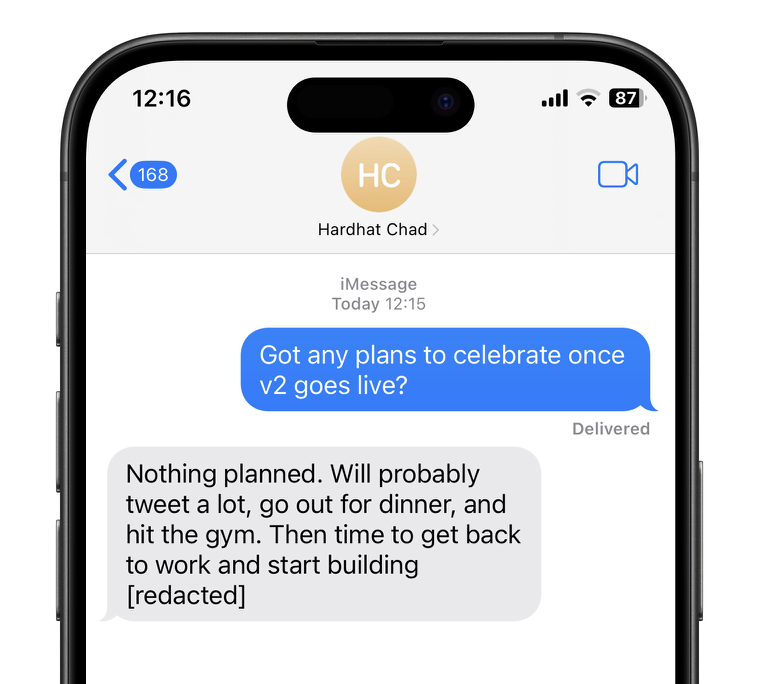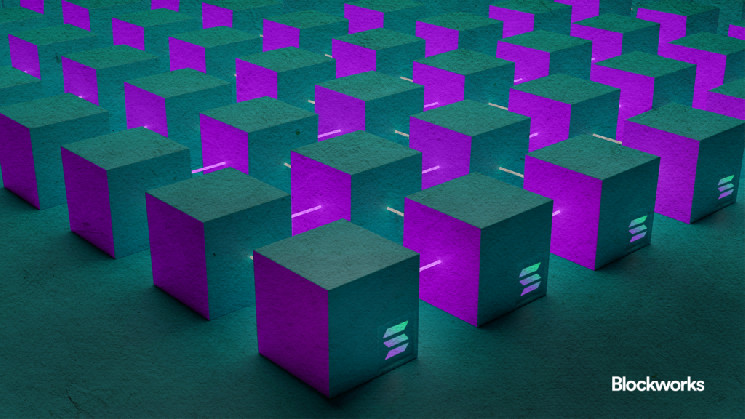Lightspeed Newsletter: ORE expected to resume mining this weekend
 blockworks.co 02 August 2024 19:21, UTC
blockworks.co 02 August 2024 19:21, UTC Today, enjoy the Lightspeed newsletter on Blockworks.co. Tomorrow, get the news delivered directly to your inbox. Subscribe to the Lightspeed newsletter.
Howdy!
Man, if I was unemployed, I would be doing little else but watching the Olympics right now. I had forgotten what a fun event it is.
My new favorite sport: canoe slalom, which I don’t entirely understand but am obsessed with watching. Anyways:
ORE expected to resume mining over the weekend
Solana’s boogeyman is re-emerging from under the bed.
ORE, the Solana-based proof-of-work currency that pushed the network to its limits in early April before pausing operations, is expected to resume mining sometime around Sunday, its founder told Lightspeed exclusively. With delays, the launch could be pushed to early next week.
Solana and ORE have taken measures to keep the network from being overburdened a second time, but these are all yet to be tested in the wild.
ORE launched in early April as part of — and eventually grand champion of — Colosseum’s Solana accelerator-hackathon program. It’s an experiment in bringing proof-of-work, which is the mechanism used to secure and mine new bitcoin, to the higher-throughput Solana blockchain. In simple terms: It’s bitcoin on Solana. It was fair-launch, meaning insiders didn’t get privileged access to the tokens, and ORE is meant to be mined on a computer or phone — unlike bitcoin, which requires expensive and cumbersome ASICs.
(As an aside, I asked Hardhat Chad how investors like Colosseum would see returns if they don’t receive token allocations, and he said the investment would go to his new company, Regolith Labs, which will hopefully create money-making products in the ORE ecosystem.)
The program was popular at launch and was widely thought to be the culprit behind Solana’s network congestion issues in early April — when users found it difficult to land transactions on the network. After just two weeks, the currency’s pseudonymous creator Hardhat Chad announced that the project would be suspending all mining activities until it was ready to roll out a more efficient v2.
Regarding v2’s launch, the founder thinks he’s gotten v1’s kinks worked out.
“I can’t guarantee new issues won’t arise,” Hardhat Chad laughed in an interview, “but I don’t suspect the same issues will occur.”
For starters, Solana developers rolled out an upgrade to help ease the blockchain’s congestion at around the same time ORE paused mining. Solana also rolled out a new central scheduler in the interim, which could make the block creation process more efficient.
On ORE’s end, v2 implements an anti-sybil (which is one person pretending to be several people, burdening the network) measure where miners who submit hashes more frequently than once a minute — which is how often new ORE is mined — will run into errors and increased fees.
However, Hardhat Chad did say that ORE implemented a new hash function — which is how a block’s data is stored in proof-of-work — which is meant to make it easier for phone-based miners, for instance, to compete with ASICs while mining ORE. The hash function is called DrillX and uses some code that was originally written for Tor’s privacy-focused Onion Browser, Hardhat Chad told me.
The new hash function uses more Compute Units (CUs, which can be thought of like Ethereum gas) than the old one, which could create miner demand for Solana to increase its block size from the current 48 million CU limit, Hardhat Chad said. He added that he would support the network increasing its block size.
Hardhat Chad said ORE’s mission is partly to make mining a consumer experience that could bring new users into crypto — unlike bitcoin mining, which is currently run mainly by large companies.
“If we can create that fun consumer gamified experience that anyone can do from any laptop or phone, my thesis is that we can just get tokens into the hands of tens of millions of people,” he said.
— Jack Kubinec
Zero In
For those lucky enough to snag some ORE before mining was disabled, it’s been quite a bullish couple of months.

The token price spiked after Hardhat Chad paused mining, and it hasn’t slowed down since, especially as the developer announced all v1 tokens would be migrated to v2. It jumped from $500 on July 25 to over $1,200 on July 29 as ORE made announcements pertaining to the v2 release.
It remains to be seen whether ORE can maintain its price level once mining picks up again, with one new token being created every minute.
— Jack Kubinec
The Pulse
ICYMI this week in Solanaland:
- X suspends and reinstates “makenowmeme” blinks app, which allows users to create memecoins on Solana with a simple post. Minting has resumed.
- Breakpoint conference buzz is in full swing. The event will be held in Singapore from Sept. 20-21, 2024, featuring speakers from across the Solana ecosystem.
- Helius released a comprehensive Solana report, authored by Solana enthusiast Lostin, that provided valuable insight into Solana’s architecture, transaction lifecycle and recent developments.
- Jupiter’s community approved a proposal to burn 30% of its JUP token supply from team and community allocations, aiming to provide more certainty, alignment and transparency.
- The monthly Solana Ecosystem Call returned on Aug. 1, featuring updates from Drip Mobile, Future of Solana, Orca’s DeFi usability and Breakpoint 2024.
- SOL’s price is dropping hard, currently at $155. Some speculate this is due to a recent revelation from a whistleblower that FTX has a secret holding of 8% of Solana’s supply. If true, panic sellers may be reacting to fears that this massive cache could potentially be liquidated.
— Jeffrey Albus
One Good DM





